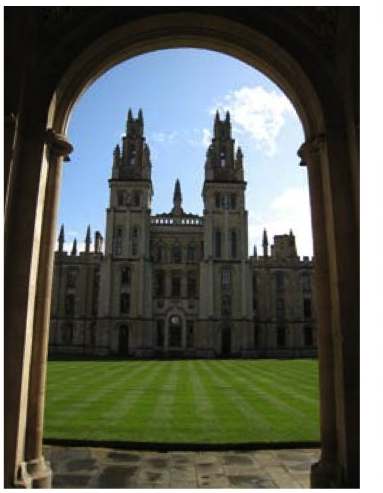 Alice’s Real-Life Wonderland
Alice’s Real-Life Wonderland
Spellcraft – national spiritual magazine
It was in and around the English town of Oxford that Lewis Carroll created a magical world for his young friend Alice, and a story that turned into one of the most loved books – and now movies! – ever.
The beautiful town of Oxford, a 90-minute drive north of London, has inspired some of the greatest stories of all time, from The Lord of the Rings and Harry Potter to Alice In Wonderland. Known as the City of Dreaming Spires for its beautiful skyline of gothic churches and historic college buildings, it is like a place from a faerytale, all old stone buildings, cobbled streets and rounded archways that lead onto sunny green squares.
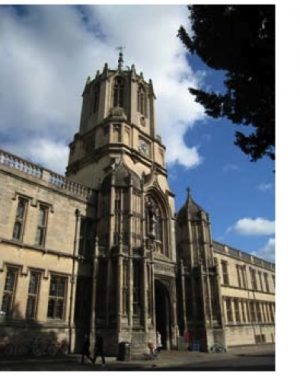 It’s a university town, so there are students riding bicycles along the narrow streets and filling the quaint little pubs, and constant debate, lectures and learning. Twenty-five British prime ministers – and three Australian ones – were educated there, as well as scientists Stephen Hawking and Richard Dawkins, Nobel laureate Aung San Suu Kyi, eighty-six Archbishops of Canterbury, and writers including Evelyn Waugh, Aldous Huxley, Oscar Wilde, J.R.R. Tolkien and Philip Pullman.
It’s a university town, so there are students riding bicycles along the narrow streets and filling the quaint little pubs, and constant debate, lectures and learning. Twenty-five British prime ministers – and three Australian ones – were educated there, as well as scientists Stephen Hawking and Richard Dawkins, Nobel laureate Aung San Suu Kyi, eighty-six Archbishops of Canterbury, and writers including Evelyn Waugh, Aldous Huxley, Oscar Wilde, J.R.R. Tolkien and Philip Pullman.
It was to here that nineteen-year-old Charles Lutwidge Dodgson – later known as Lewis Carroll, the author of Alice In Wonderland – moved in 1851. He was a student at Christ Church College, one of the largest and prettiest of the thirty-eight colleges that make up the University of Oxford, and remained there as a professor of mathematics until his death almost fifty years later. Features of the college buildings ended up in his stories – the scene where Alice’s neck “rises like a stalk” was inspired by the brass fire dogs in the Great Hall, which featured ornamental heads on long necks, the door she demands be opened for her was modelled on the college’s Chapter House, and the Rabbit Hole she fell down was born from the stairs at the back of the main hall. Even the lion in the sequel Through the Looking Glass spoke in a voice inspired by the huge bell in Tom Tower, one of the entrances to the college, which goes into Tom Quad, which the author’s room overlooked.
Lewis’s fellow teachers, staff and friends also inhabited his stories (look for the academic sleeves on the Caterpillar, the Dodo and others), but it was the children of Henry Liddell, the head of Christ Church, who inspired and starred in them. Young Alice and her sisters Edith and Lorina were often bored living amongst the serious academics, so they hung around Lewis, who would entertain them, and amuse himself, by making up fantastical tales. He also took them on outings around Oxford – to the Botanic Gardens; to watch a royal parade; to the museum where the remains of a dodo that inspired a character were housed; and to run around on Christ Church Meadow. This open pastureland between the college and the Rivers Cherwell and Thames is still a popular picnic spot today, alive with people, sunshine, sport and laughter, and punts are rowed along the river next to it as they were in Lewis’s day.
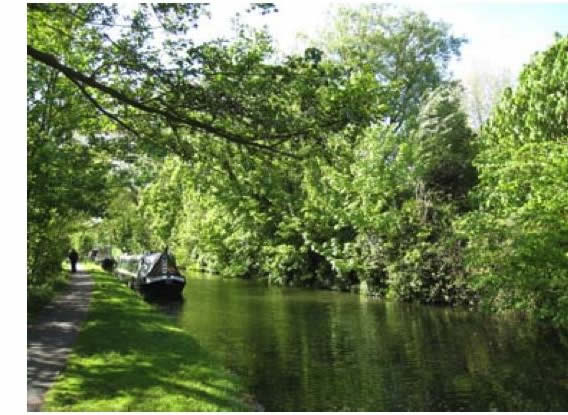 We walked along the river and through the meadow at dawn, enchanted by the rising mist, the cheeky squirrels, the amazing geese and their babies, and the commitment of the students training as oarsmen on the cold but sparkling water.
We walked along the river and through the meadow at dawn, enchanted by the rising mist, the cheeky squirrels, the amazing geese and their babies, and the commitment of the students training as oarsmen on the cold but sparkling water.
The most significant outings for Alice and her sisters were the days Lewis took them rowing from Christ Church up to Port Meadow and the ruins of Godstow Nunnery, during which he regaled the girls with stories he concocted about them. He incorporated the people and places they knew, with each girl as the heroine of her own story, and they were different every time. It was on one such outing, on July 4, 1862, that he came up with the tale that became Alice’s Adventures in Wonderland. The only thing unique about this story was that 10-year-old Alice begged him to write it down for her, to capture forever their golden afternoon, and thus the classic book was born.
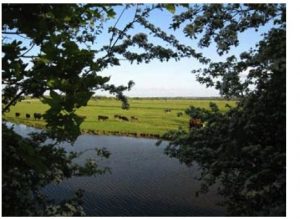 Today people still make their way up to beautiful Port Meadow, either by boat or along the tiny canal path beside the water, for a picnic on the grassland or a beer at the Trout Inn that overlooks it. The walk is further than expected but beautiful, with trees shading the dirt track, flowers scenting the air, sunlight streaming through the leaves and cute baby ducklings swimming alongside. There are gypsy boats moored along canals, in various states of opulent luxury or faded disrepair, which adds a touch of intrigue.
Today people still make their way up to beautiful Port Meadow, either by boat or along the tiny canal path beside the water, for a picnic on the grassland or a beer at the Trout Inn that overlooks it. The walk is further than expected but beautiful, with trees shading the dirt track, flowers scenting the air, sunlight streaming through the leaves and cute baby ducklings swimming alongside. There are gypsy boats moored along canals, in various states of opulent luxury or faded disrepair, which adds a touch of intrigue.
After pausing for a pot of tea in a charming pub in the village of Binsey, the location of the Treacle Well mentioned at the Mad Hatter’s Tea Party, we finally reached Port Meadow, and it was breathtaking in the late afternoon sunshine. Swans and geese floated gently on the water, cows grazed nonchalantly on the lush green grass, and the light turned the whole place into a magical new world. This was the site of Lewis’s “golden afternoon”, and it was particularly enchanting to know that right here was where “Alice was beginning to get very tired of sitting by her sister on the bank and having nothing to do, when suddenly a White Rabbit with pink eyes ran close by her.”
Across the narrow river, the pretty ruins of Godstow Nunnery are not much changed from when Alice and her sisters ran amongst them, as the 12th century Abbey was badly damaged in the Civil War of the mid-1600s, two centuries before Lewis took the Liddell children there to play amongst the fallen buildings. Pretty flowers and tangled vines now cover the walls, and you can almost see the etheric imprint of small children and hear their laughter echoing around the piles of broken stone.
Later, walking back to town, a racing boat flashed by, filled with oar-wielding students in training for a regatta, and the modern world imposed itself back on our senses. For this is primarily a modern university town, and there are fascinating tours of the many colleges that define Oxford. We took one with a man who hates students and academics (which makes his profession of university tour guide a strange choice!), but he was funny and incredibly knowledgeable, and shared the history of the place, interspersed with hilarious anecdotes and colourful tales, and lists of the luminaries who attended each college.
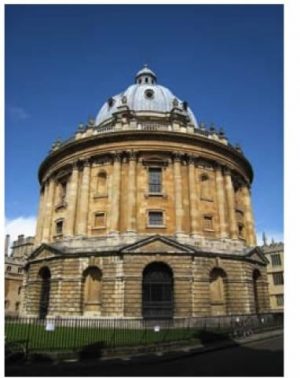 It started at the Radcliffe Camera, a gorgous circular building that was the sanitarium in Harry Potter, and went through Merton, All Souls (now famous from the A Discovery of Witches books and TV series), Brasenose, New, and Exeter Colleges, the latter the location of the His Dark Materials series, complete with carved gargoyles and beautiful old stone buildings. In each we admired the beautiful courtyards, huge chestnut trees and grassy quadrangles like church cloisters. Sadly Christ Church always seemed to be closed to visitors when we went past, for choir practice, exams, church services, meals and several other reasons, but you can book an Alice tour in advance (email tourism@chch.ox.ac.uk) and go within the famous walls, peering through doorways, along thousand-year-old cloisters and into the Great Hall that inspired the Rabbit Hole in Alice’s story as well as Harry Potter’s Hogwarts.
It started at the Radcliffe Camera, a gorgous circular building that was the sanitarium in Harry Potter, and went through Merton, All Souls (now famous from the A Discovery of Witches books and TV series), Brasenose, New, and Exeter Colleges, the latter the location of the His Dark Materials series, complete with carved gargoyles and beautiful old stone buildings. In each we admired the beautiful courtyards, huge chestnut trees and grassy quadrangles like church cloisters. Sadly Christ Church always seemed to be closed to visitors when we went past, for choir practice, exams, church services, meals and several other reasons, but you can book an Alice tour in advance (email tourism@chch.ox.ac.uk) and go within the famous walls, peering through doorways, along thousand-year-old cloisters and into the Great Hall that inspired the Rabbit Hole in Alice’s story as well as Harry Potter’s Hogwarts.
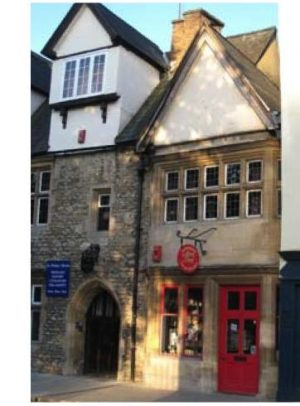 Another wonderfully Alice in Wonderland place to visit is Alice’s Shop, opposite Christ Church. This is the grocery store where Alice and her sisters bought their lollies in the 1850s, and Lewis wrote it into Through the Looking Glass as the Old Sheep Shop (because the shopkeeper was an old lady with a bleating voice). In the story, the shop is both wondrous and bizarre, “full of all manner of curious things”, which it remains so today. It’s filled with Alice memorabilia, from the gorgeous teapot and tea cups I bought for my own Mad Hatter Tea Party, to Cheshire Cat tea cosies, White Rabbit pocket watches, jewellery, trinket boxes, games, toys, books, stationery, artwork and lollies. You can even buy online at www.sheepshop.com. Oxford also has a few dedicated Alice experiences, from the Café Loco tea shop, with its Mad Hatter murals on all the walls, to walks to the related sites and art inspired by the story.
Another wonderfully Alice in Wonderland place to visit is Alice’s Shop, opposite Christ Church. This is the grocery store where Alice and her sisters bought their lollies in the 1850s, and Lewis wrote it into Through the Looking Glass as the Old Sheep Shop (because the shopkeeper was an old lady with a bleating voice). In the story, the shop is both wondrous and bizarre, “full of all manner of curious things”, which it remains so today. It’s filled with Alice memorabilia, from the gorgeous teapot and tea cups I bought for my own Mad Hatter Tea Party, to Cheshire Cat tea cosies, White Rabbit pocket watches, jewellery, trinket boxes, games, toys, books, stationery, artwork and lollies. You can even buy online at www.sheepshop.com. Oxford also has a few dedicated Alice experiences, from the Café Loco tea shop, with its Mad Hatter murals on all the walls, to walks to the related sites and art inspired by the story.
And although it became famous after Lewis Carroll’s time, another significant literary piece of Oxford is the quaint Eagle and Child Pub. During the 1930s and 40s it was home to the writers group The Inklings, which included J.R.R. Tolkien and C.S. Lewis. They would read each other their unfinished works and discuss, debate, criticise and encourage each other with their writing and the creation of their magical worlds. The Lord of the Rings by Tolkein and Out of the Silent Planet by C.S. Lewis were two of the first to be read there, and Tolkein based his story The Notion Club Papers (which was published after his death in Sauron Defeated) on The Inklings group. It was amazing to have dinner there and think about my own books, knowing that sixty-odd years ago these giants of literature were sitting in the same spot discussing their writing.
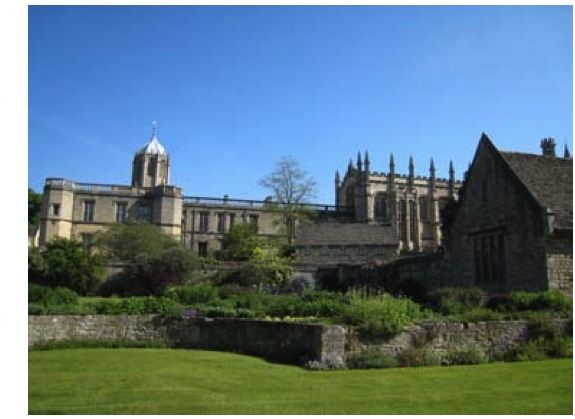 Whether you love history, nightlife, rowing on a peaceful river or the magic and mystery of Alice In Wonderland, a visit to Oxford will fill you with wonder and the gentle delights of the English countryside.
Whether you love history, nightlife, rowing on a peaceful river or the magic and mystery of Alice In Wonderland, a visit to Oxford will fill you with wonder and the gentle delights of the English countryside.
Serene Conneeley is an Australian writer and healer with a fascination for history, travel, ritual and the myth and magic of ancient places and cultures. She is the author of the non-fiction books Seven Sacred Sites, A Magical Journey: Your Diary of Inspiration, Adventure and Transformation, Faery Magic, Witchy Magic and Mermaid Magic, and the novels Into the Mists, Into the Dark, Into the Light, plus Into the Storm, Into the Fire and the upcoming Into the Air. Visit her at www.SereneConneeley.com.


Get Social